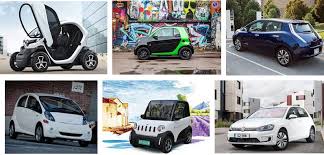reduce environmental pollution
How Volkswagen is preparing to enter the market of electric vehicles series I. D.
 In the Volkswagen showroom, near Wolfsburg, gathered about 5,000 dealers from all over Europe (Germany, Hungary, Austria) to witness the preparation of the company to enter the world market of electric vehicles from the series I. D. the Manufacturer wants to prepare its sales team for the era of electric mobility. The event was attended not only by dealers, but also by everyone who wants to get acquainted with the world of electric mobility.
In the Volkswagen showroom, near Wolfsburg, gathered about 5,000 dealers from all over Europe (Germany, Hungary, Austria) to witness the preparation of the company to enter the world market of electric vehicles from the series I. D. the Manufacturer wants to prepare its sales team for the era of electric mobility. The event was attended not only by dealers, but also by everyone who wants to get acquainted with the world of electric mobility.
Most of the information at the event remains confidential, as some electric vehicles presented in the showroom will not be released to the market for several years. Also, some details about vehicles and plans should remain confidential for reasons of competition, which is the norm at such events. Continue reading
Why is it more profitable to produce electric cars than cars with ice?
 1. Minimum engine options maximum power configurations
1. Minimum engine options maximum power configurations
The biggest advantage of electric vehicle manufacturers is the easily variable power inherent in electric motors.
The manufacturer can produce only a few motors, but offer up to 30 different transmission options. In short, “horsepower”, which is not the correct definition for electric motors, can be adjusted, that is, one motor can have several power options.
In turn, the manufacturer of cars with ice, to offer similar variability and be able to compete, must spend money on the development and creation of a much larger number of engines, with each engine will need its own production and Assembly line, while the manufacturer of electric vehicles is satisfied with the simplicity of design and savings on Assembly due to the smaller size of the electric motor. Continue reading
Experts have predicted 3 major evolutionary changes in the automotive industry by 2030
 Cars will change in the next decade more than in the last century. And that’s probably a good thing, because cars account for a significant share of global carbon dioxide (CO2) emissions. It is estimated that there are more than 1.37 billion cars in the world, and this figure is expected to rise to 2 billion by 2040.
Cars will change in the next decade more than in the last century. And that’s probably a good thing, because cars account for a significant share of global carbon dioxide (CO2) emissions. It is estimated that there are more than 1.37 billion cars in the world, and this figure is expected to rise to 2 billion by 2040.
There are many innovative ideas on how to deal with emissions from cars: from Hyper-efficient flying cars to hydrogen fuel cells, which as a by-product emit only water, however, this is a distant prospect compared to electric cars and Autonomous cars, which are expected to appear on the roads by 2030. Continue reading


